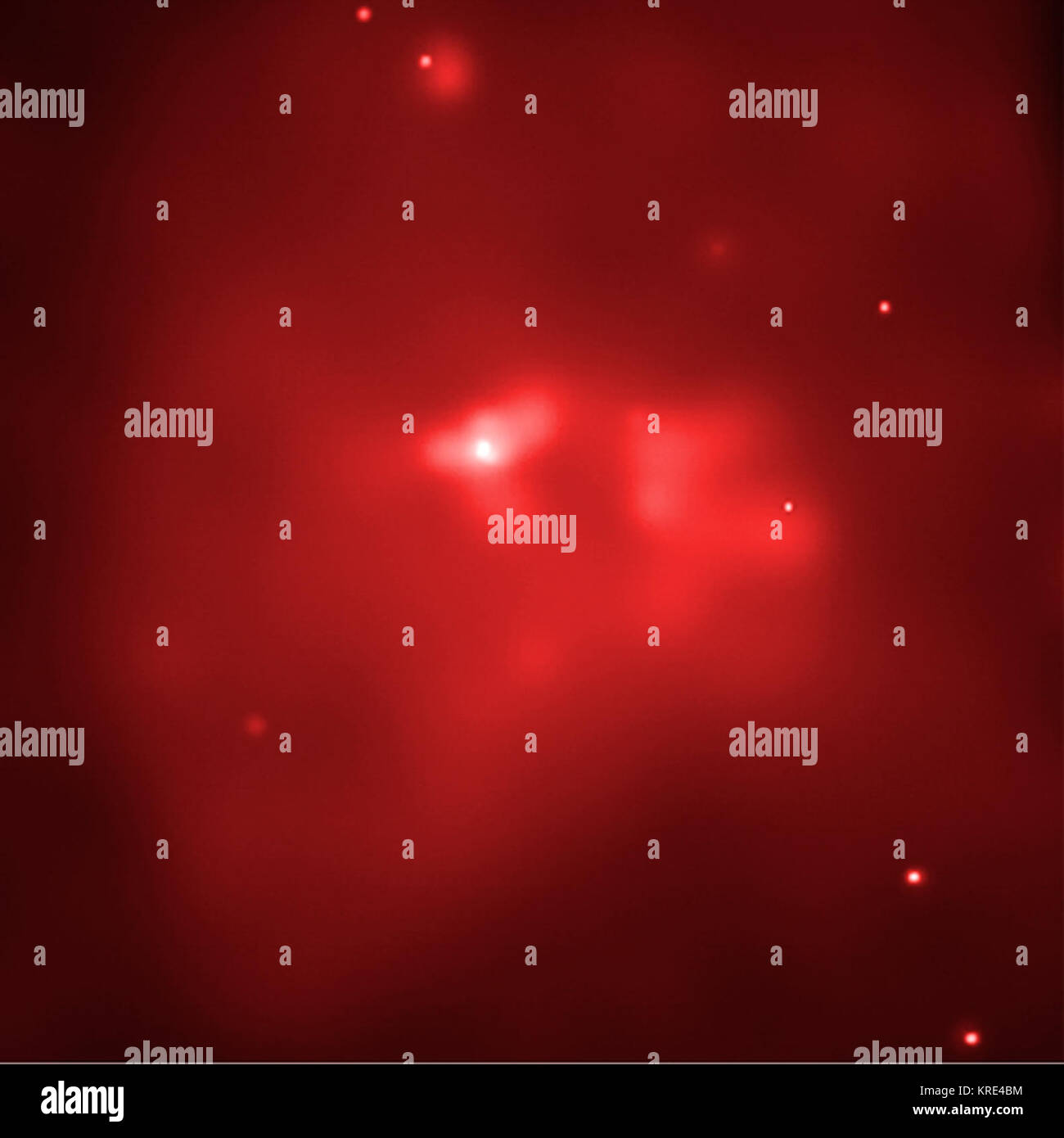This composite image shows a vast cloud of hot gas (X-ray/red), surrounding high-energy bubbles (radio/blue) on either side of the bright white area around the supermassive black hole. By studying the inner regions of the galaxy with Chandra, scientists estimated the rate at which gas is falling toward the galaxy's supermassive black hole. These data also allowed an estimate of the power required to produce the bubbles, which are each about 10,000 light years in diameter. Surprisingly, the analysis indicates that most of the energy released by the infalling gas goes into producing jets of high

Image details
Contributor:
NASA Image Collection / Alamy Stock PhotoImage ID:
KRE4BMFile size:
7.2 MB (84.1 KB Compressed download)Releases:
Model - no | Property - noDo I need a release?Dimensions:
1581 x 1581 px | 26.8 x 26.8 cm | 10.5 x 10.5 inches | 150dpiDate taken:
24 April 2006More information:
This image is a public domain image, which means either that copyright has expired in the image or the copyright holder has waived their copyright. Alamy charges you a fee for access to the high resolution copy of the image.
This image could have imperfections as it’s either historical or reportage.
This composite image shows a vast cloud of hot gas (X-ray/red), surrounding high-energy bubbles (radio/blue) on either side of the bright white area around the supermassive black hole. By studying the inner regions of the galaxy with Chandra, scientists estimated the rate at which gas is falling toward the galaxy's supermassive black hole. These data also allowed an estimate of the power required to produce the bubbles, which are each about 10, 000 light years in diameter. Surprisingly, the analysis indicates that most of the energy released by the infalling gas goes into producing jets of high-energy particles that create the huge bubbles, rather than into an outpouring of light as observed in many active galactic nuclei. NGC 507